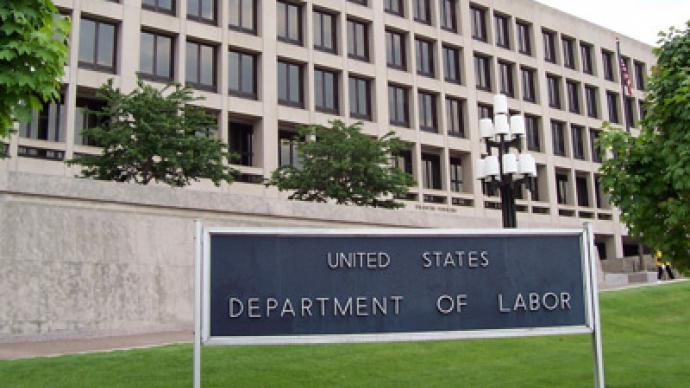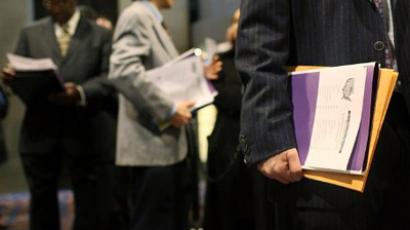Labor Dept. trumpets declining unemployment while US labor force participation at 30-year low

The latest jobs figures from the US Labor Department make America’s current unemployment crisis seem almost over. By digging deeper into the statistics, however, the good news isn’t any more that number fudging from Washington.
For the month of April, the US Department of Labor says that the unemployment rate in America has declined to 8.1 percent, down one-tenth of a percent from a month earlier. Also on the decline, though, is the labor force participation rate, which last month clocked in at 63.6 percent — the lowest it’s been since 1981.While the friendlier-appearing unemployment rate reveals that there is a drop in the proportion of Americans filing jobless benefit claims with the federal government when compared with the total of those seeking work, the news isn’t exactly as nice as the Labor Department is making it out to be. The labor force participation rate, the statistic that shows the ratio of those holding or looking for work with the total working age population, is not just at a three-decade low, but is an important factor in making the other figure look as good as it does. Explaining the toll that the participation rate has on the unemployment level, John Merline of Investor’s Business Daily explains, “had the labor force participation rate had stayed where it was in June 2009, the unemployment rate would be around 11 percent.”As baby boomers reach retirement age, the number of people considered employable but opting to not seek work is on the rise. As a result, fewer America’s that could be getting jobs are actually trying to do so. In turn, younger job seeker are searching for employment with less competition, but on a whole the number of people pursuing work is actually near a record-breaking low.“There were a lot of younger people who had gone back to school to get more education and training, and we thought we’d see more of them joining the work force now,” Andrew Tilton, a senior economist at Goldman Sachs, tells the New York Times. Unfortuantely, that hypothesis did not prove correct. “May, June and July — the months when people are typically coming out of schooling — will be the big test,” he adds.Looking into the latest Labor Department numbers, there unemployment claims figure — while not exactly all that accurate — is perhaps the only “good” news to affect the workforce this week. While the government says that unemployment claims dropped in April, the number of new jobs created is a statistic much smaller than what was hoped for. Economists had expected the creation of around 160,000 new jobs in April but today the Labor Department says that number is closer to 121,000. The underemployment rate also maintains its 14.5 percent figure from March and the transportation, warehousing and construction industries all cut jobs — as did the federal government.














